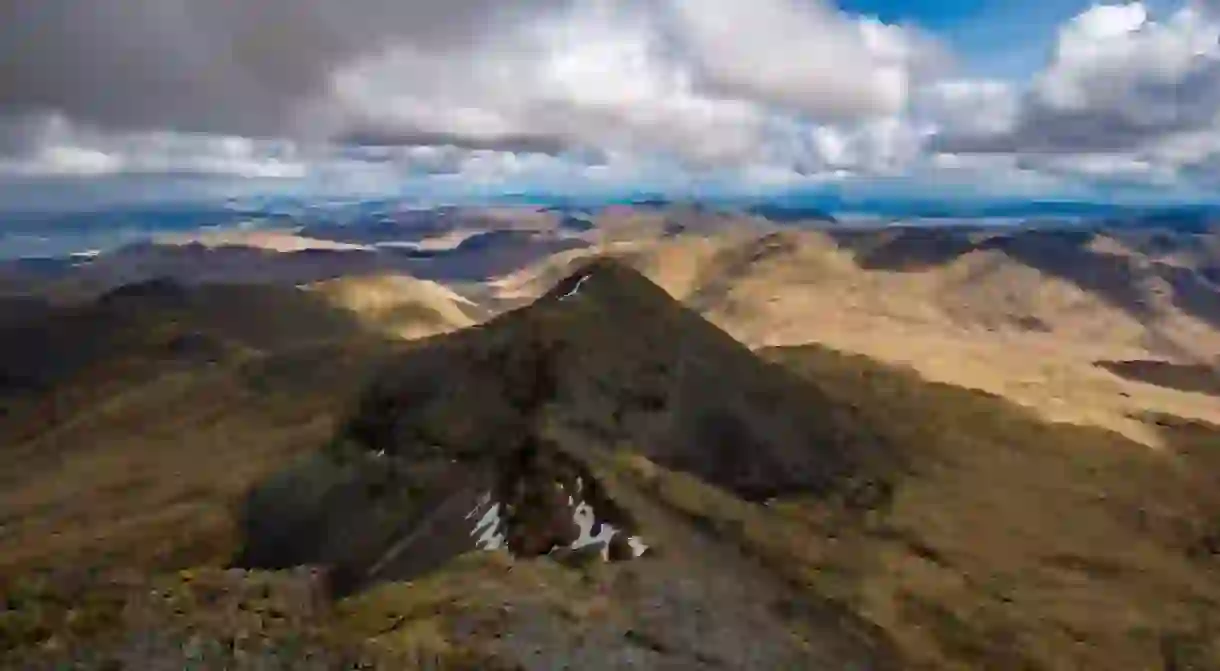8 Reasons Why Outdoor Lovers Should Visit the Isle of Mull, Scotland

With its fair share of trackless paths, ascending hills and intoxicating coastal views, the Isle of Mull tops the list as one of Scotland’s best destinations for outdoor lovers. As the second largest island of the Inner Hebrides and the country’s top wildlife-watching spot, there’s an abundance of natural beauty to seek out. From bagging a Munro to wild swimming, here’s why Mull is a recipe for pure adventure.
It’s the perfect blend of the Scottish Highlands and Islands
Between the kaleidoscopic seafront houses framing Tobermory and the vast, varied landscape, Mull is a dreamy combination of both highland and island life. Single track roads weave in and out of the lush terrain while the best rests off the trail. Between the pink-quartz coastlines, glimmering beaches, lochs and verdant wilderness, Mull is essentially a microcosm that encapsulates Scotland on one island, yet with its own unique persona.

There’s a Munro to be bagged
Towering over its brood of smaller hills is the mighty Ben More, Mull’s one lone Munro. After its teammates from Skye, Ben More is the highest peak in the Inner Hebrides and made Munro status by reaching an elevation of over 3,000 feet (914.4 metres). The best way to bag this beauty is starting from Loch na Keal by the shores from which it rises. Since the mountain is scree-slope heavy, conscientious climbers should tread with caution. Like the rest of Scotland’s Munros, the views atop make it all worthwhile.

But there’s also a Corbett to be had
Dùn da Ghaoithe (Scots Gaelic for ‘Forth of the Two Winds’) is Mull’s second highest mountain. At 2,513 feet (765.9 metres) high, this gem stands out as the island’s only Corbett, a Scottish mountain between 2,500 and 3,000 feet (762–914.4 metres) with a prominence of at least 500 feet (152.4 metres). Those yearning for a challenge but not ready to go all out with the intensity of a Munro will appreciate this golden-flecked peak. Be warned that Dùn da Ghaoithe does have a kick in her step that comes in the form of a thrill-inducing ridge and deep brooding quarries. With emerald sea views from virtually every vantage point, what’s not to love?

The coastal walks are beyond compare
Beaches of sugar-white sand and black diamond cliffs trimmed by invigorating seas form much of Mull’s coastline, yet it’s the patches of quartz that catch the eye. Whether a brisk stroll to get the blood flowing or a remote, contemplative wander, there are miles of coastal space for everyone. Burg is only reachable on foot by climbing the iron ladder lining the beach’s cliffside – look out for the 50-million-year-old tree trunk cliff imprint, rare Scotch burnet moth and wildlife galore. Calgary Bay sports crystal sands, while the cove of Carsaig is famed for its sea arches, secret caves and waterfalls.

Wild swimmers brace yourselves for what Mull has in store
A practice as old as time but currently experiencing a comeback, wild swimming is all the rage these days. Bonnie Scotland just so happens to be riddled with wild spots tailored to dipping your toes in the icy cool waters, and Mull is no exception. Despite the name, Loch Pottie is a joy for such shenanigans and is strategically placed close to Ross of Mull Bunkhouse, a dream accommodation spot for outdoor lovers. Fidden Beach boasts ice-cream-white sands and translucent waters akin to some tropical paradise. Then again, why not go all out in the Sound of Mull, complete with boisterous tides!

Mull is one of the UK’s best wildlife-watching destinations
Mull’s status as one of Scotland’s best whale-watching spots is a reason in itself to visit. Basking sharks, dolphins, otters and seals share the surrounding waters too. It also happens to be one of the greatest places to see ultra-rare white-tailed sea eagles, golden eagles and hen harriers, to name but a few bird species that populate the island. Whether walking along a hidden beach or scaling Ben More, all you need to do is look, and nature will come to you.

The photo-friendly views put it all into perspective
It’s the little moments that count in life, such as true friendship or that soul-moving view that one time on the Isle of Mull! This Inner Hebridean island is a known photographer’s paradise and a colourful canvas of natural beauty. The ‘Mirrie Dancers’ or Northern Lights reveal their divine presence on a regular basis too. From Tobermory’s candy-coloured buildings and the hidden coves to the show-off hills like the twin-peaked Corra-bheinn or Ben Buie with its craggy top, there’s no shortage of photogenic sites awaiting social media fame.

Scotland’s sacred island and one of the world’s greatest natural wonders are just a boat ride away
Although Mull is jam-packed with enough adventure travel activities to fulfil even the most ambitious desires, thrill-seekers can take advantage of the treasures that lurk close by such as Fingal’s Cave and Iona. Jump on a boat to the uninhabited island of Staffa and find Fingal’s Cave. A series of hexagonal basalt columns garnish this enormous cathedral-like sea cave, while the natural acoustics send shivers up the spine. The tiny island of Iona exudes serenity and makes for picture-perfect walks along the bays and to the ancient Abbey.














